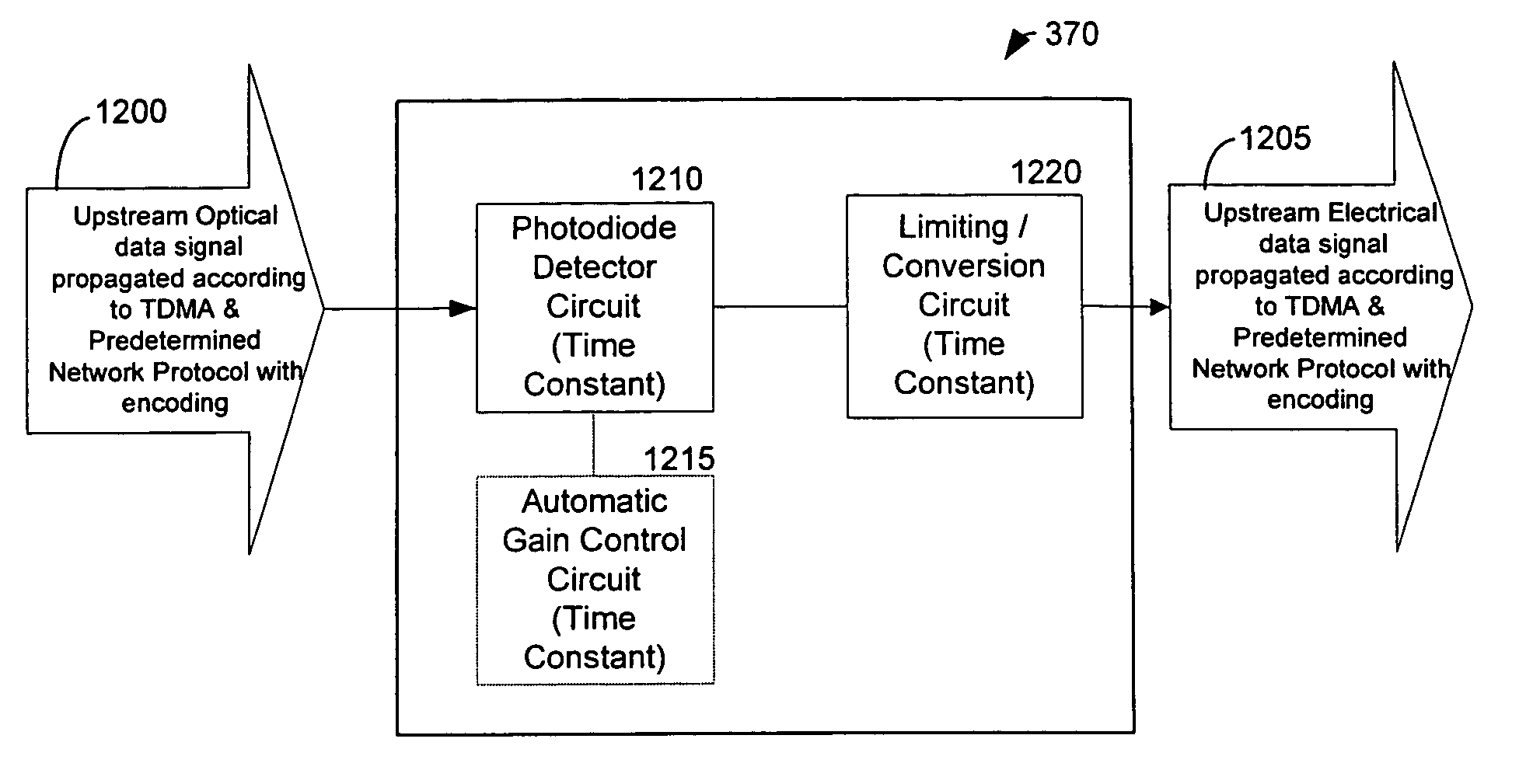System and method for increasing upstream communication efficiency in an optical network
a technology of optical network and communication efficiency, applied in the field of video, voice, and data communication, can solve the problems of equipment cost and upwards of hundreds of thousands of dollars, and achieve the effects of reducing power down times of optical transmitters, increasing operating speeds, and increasing data transmission
- Summary
- Abstract
- Description
- Claims
- Application Information
AI Technical Summary
Benefits of technology
Problems solved by technology
Method used
Image
Examples
Embodiment Construction
[0046]An optical transmitter of a subscriber optical interface and an optical receiver of a laser transceiver node can have time constants adjusted to a frequency of data that is formatted according to a predetermined network protocol, that is encoded with a predetermined coding scheme, and that is transmitted according to a predetermined data transmit timing scheme. A network protocol according to the present invention can comprise a network protocol that breaks up data into packets
[0047]The high frequency circuits present in the optical transmitter and optical receiver of the present invention can be adjusted for maximum efficiency when supporting data formatted according to a predetermined network protocol comprising Gigabit Ethernet, with a predetermined encoding scheme of 8B / 10B encoding, and data that is transmitted according to a predetermined data timing scheme comprising TDMA. Specifically, the time constants of two driver circuits of respective optical transmitters can be ...
PUM
 Login to View More
Login to View More Abstract
Description
Claims
Application Information
 Login to View More
Login to View More - R&D
- Intellectual Property
- Life Sciences
- Materials
- Tech Scout
- Unparalleled Data Quality
- Higher Quality Content
- 60% Fewer Hallucinations
Browse by: Latest US Patents, China's latest patents, Technical Efficacy Thesaurus, Application Domain, Technology Topic, Popular Technical Reports.
© 2025 PatSnap. All rights reserved.Legal|Privacy policy|Modern Slavery Act Transparency Statement|Sitemap|About US| Contact US: help@patsnap.com



